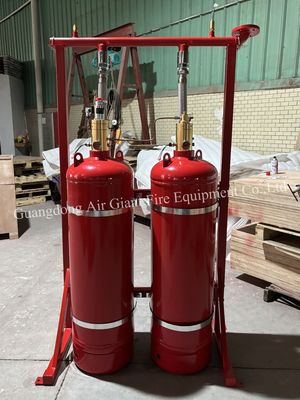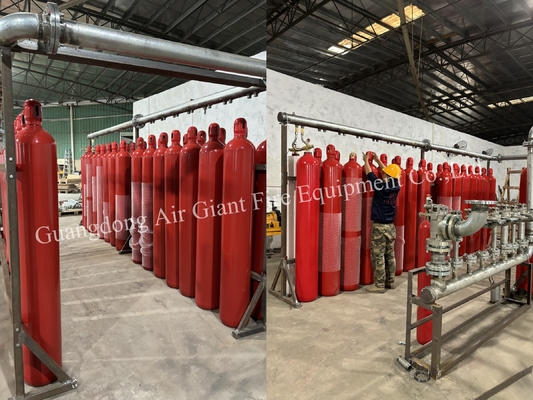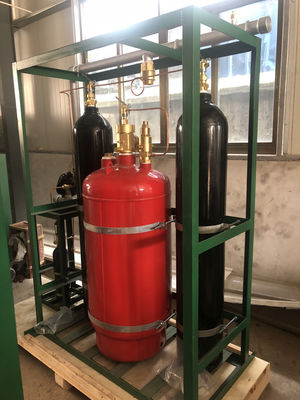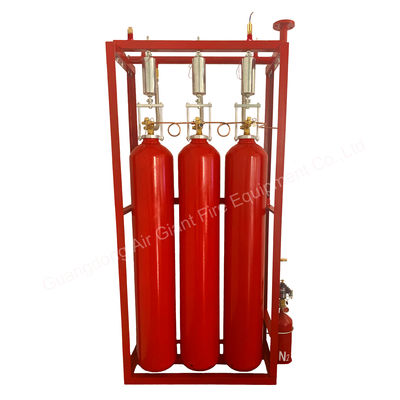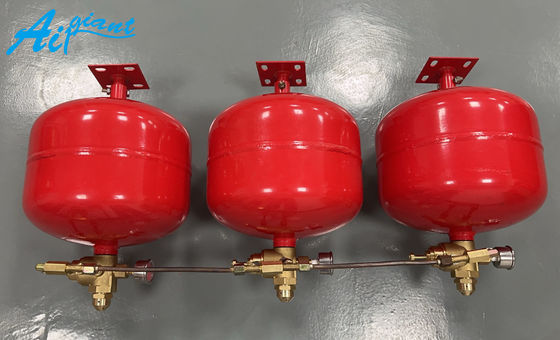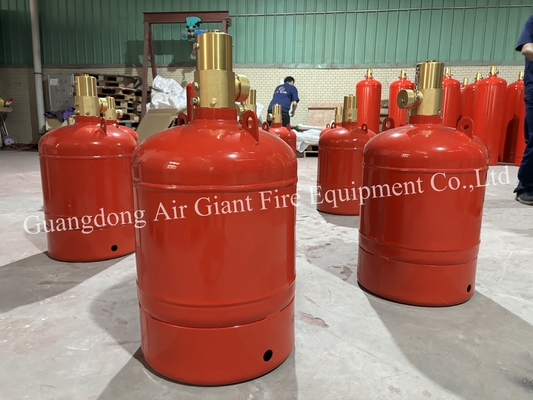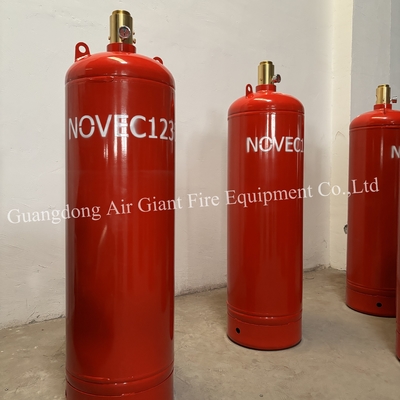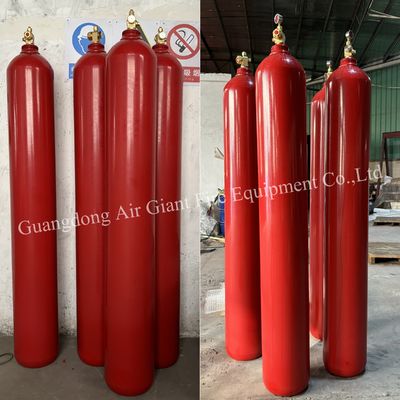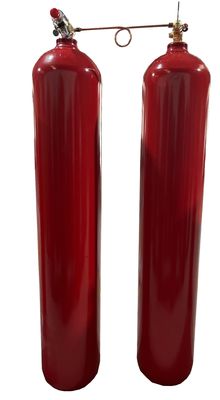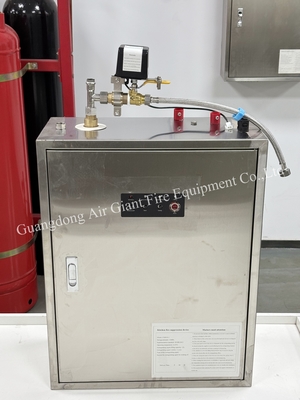Fire Suppression Agent System For Kitchen For Restaurant Fire Protection
*** Description of Kitchen Fire Suprresion System
Activation Method:
1. Automatic Activation Method:
1.1 Thermal Detection: When a fire occurs in the kitchen oil pot, the heat generated by the flames will cause the temperature inside the hood to rise. When the temperature reaches the preset thermal threshold of the fire suppression system (usually 183°C to 185°C), the thermal detector will automatically disconnect, triggering the fire suppression system to activate automatically.
1.2 Release of Fire Extinguishing Agent: Once the fire suppression system is activated, it will release fire extinguishing agents (such as dry powder, water-based agents, etc.) through atomizing nozzles, spraying them onto the oil pot and inside the hood. These agents will either chemically react with the burning oil or physically isolate it, forming a covering layer to cut off the air supply and extinguish the flames.
1.3 Cooling Down: After the fire suppression system sprays the extinguishing agent, it typically activates a water flow valve automatically, spraying water onto the oil pot and exhaust hood to cool them down and prevent re-ignition. The cooling water is sprayed for about two minutes before the system automatically shuts off the water.
2. Manual Activation Method
2.1 Fire Detection: In the early stages of a fire or if the automatic activation system fails, on-site personnel can manually activate the fire suppression system.
2.2 Operating the Manual Activation Device: Follow the instructions on the device to remove the safety pin, pull out the ring, or press the button, causing the drive valve to activate and release the fire extinguishing agent from the high-pressure cylinder.
2.3 Observing the Extinguishing Effect: After manually activating the fire suppression system, observe whether the fire source is completely extinguished and take necessary follow-up measures.
3. Mechanical Emergency Activation Method
3.1 Confirming Automatic and Manual Activation Failure: When both automatic and manual activation methods fail to start the device normally, the mechanical emergency activation method can be used.
3.2 Operating the Mechanical Drive Valve: Manually operate the drive valve handle to open the mechanical drive valve, releasing the fire extinguishing agent to extinguish the fire.
*** Components of Kitchen Fire Suprresion System

|
1
|
Main Cabinet
|
2
|
Agent Storage Cylinder
|
3
|
Air Inlet Assembly I
|
4
|
Air Inlet Assembly II
|
|
5
|
Bearing Box Wheel
|
6
|
Thermal Fusible Metal Cable Release Device
|
7
|
Nozzle
|
8
|
Manual Switch Button
|
|
9
|
Fuel Valve
|
10
|
Driving Cylinder Assembly
|
11
|
Spanner
|
12
|
Tension Spring
|
|
13
|
Mechanical Actuator Assembly
|
14
|
Relief Pump Support Assembly
|
15
|
High-Pressure Output Pipe Assembly
|
16
|
Check Valve
|
|
17
|
Agent Delivery Pipe
|
18
|
Conduit
|
19
|
Steel Rope
|
20
|
Junction Box
|
|
21
|
Water Inlet Pipe
|
22
|
Control Panel
|
|
|
|
|
*** Working principle of kitchen Fire Suprresion System
The working principle of kitchen fire suppression typically involves three key mechanisms:
Oxygen Deprivation (Smothering):
Kitchen fires, especially grease or oil fires (Class F), require oxygen to sustain combustion. Fire extinguishers or suppression systems release agents (e.g., wet chemicals, foam, or carbon dioxide) to displace oxygen around the flames. For example, a fire blanket physically blocks oxygen, while CO₂ gas forms an inert layer over burning oil.
Temperature Reduction (Cooling):
Agents like water (in automatic sprinklers) or wet chemical solutions absorb heat energy, lowering the fuel temperature below its ignition point. Water mist systems are particularly effective as they rapidly cool flames and surrounding surfaces without spreading grease.
Chemical Chain Reaction Interruption:
Dry chemical extinguishers (e.g., ABC powder) or specialized wet chemicals disrupt the combustion process at a molecular level. For grease fires, wet agents (potassium acetate/citrate) create a soap-like layer (saponification) that seals the fuel surface, preventing re-ignition.
*** Advantage of Kitchen Fire Suprresion System
-- Rapid Response
-- Automated Operation
-- Effective Cooling and Re-ignition Prevention
-- Environmentally Friendly and Safe
-- Wide Applicability
-- Self-Diagnostic Function
Application of Kitchen Fire Suprresion System
Kitchen Equipment Fire Suppression Device is mainly used at the following site: hotel, restaurant kitchen, the catering center of the stadium, large/medium/small restaurant, fast food restaurant, the catering center of the airport, the kitchen of the office and hospital, large office building restaurant, the kitchen of industrial and mining enterprises, college canteen and so on.

Packages of Kitchen Fire Suprresion System
We pack products with first polyfoam and then the wooden cases. Once products are too big or customers require a pallet for products, we will make products a pallet. The following pictures are the common packing of products:


 Your message must be between 20-3,000 characters!
Your message must be between 20-3,000 characters! Please check your E-mail!
Please check your E-mail!  Your message must be between 20-3,000 characters!
Your message must be between 20-3,000 characters! Please check your E-mail!
Please check your E-mail! 

